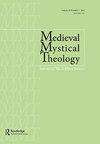God beyond words: Christian theology and the spiritual experiences of people with profound intellectual disabilities
IF 0.3
0 RELIGION
引用次数: 10
Abstract
debates and pastoral concerns might have been even more powerful without the interference of Luther’s interests. Wegener’s analysis of the layout and paratextual elements of the three Wittenberg editions is an excellent example of material text history. It is only a pity that this final section is not prefaced by a similarly close analysis of the eight surviving manuscripts, which are mentioned in the introduction but not examined. Nevertheless, one of Wegener’s greatest strengths is that she objectively describes the shifts in vernacular mysticism after Eckhart without denigrating the later works as derivative, unsophisticated or corrupted. She renders a clear account of Augustine’s place in fourteenth-century German mysticism and she provides a careful, original and provocative analysis of a long-standing classic of this genre.言语之外的上帝:基督教神学与智障人士的精神体验
如果没有路德利益的干涉,辩论和牧师的担忧可能会更加有力。韦格纳对维滕贝格三个版本的布局和副文本元素的分析是材料文本史的一个很好的例子。遗憾的是,在这最后一节之前,没有对八份幸存的手稿进行类似的仔细分析,这些手稿在引言中有所提及,但没有经过审查。尽管如此,韦格纳最大的优势之一是,她客观地描述了埃克哈特之后本土神秘主义的转变,而没有诋毁后来的作品是衍生的、简单的或腐败的。她清楚地描述了奥古斯丁在14世纪德国神秘主义中的地位,并对这一流派的一部长期经典进行了仔细、原创和挑衅性的分析。
本文章由计算机程序翻译,如有差异,请以英文原文为准。
求助全文
约1分钟内获得全文
求助全文

 求助内容:
求助内容: 应助结果提醒方式:
应助结果提醒方式:


